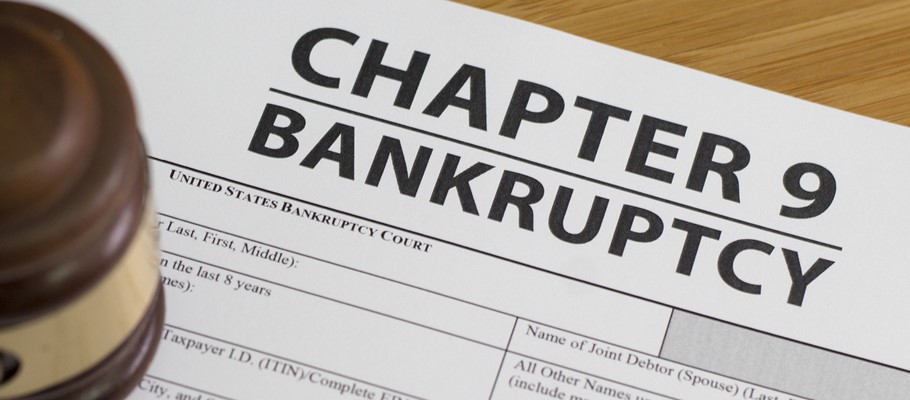What is Chapter 9 Bankruptcy?
Chapter 9 bankruptcy is a unique and specialized form of bankruptcy designed explicitly for municipalities, offering a legal framework for the reorganization of their debts. Unlike other chapters of bankruptcy primarily catering to individuals or businesses, Chapter 9 serves as a financial lifeline for cities, counties, school districts, and other local government entities facing insurmountable financial challenges.
When Can Chapter 9 Be Declared?
The declaration of Chapter 9 bankruptcy is contingent upon specific circumstances faced by municipalities. To qualify, a municipality must demonstrate that it is insolvent or unable to meet its financial obligations. Moreover, the municipality must show a genuine desire to negotiate with its creditors in good faith, seeking a viable path to restructure its debts and regain financial stability.
How Chapter 9 Bankruptcy Protection Works?
The mechanism of Chapter 9 bankruptcy protection is rooted in the collaborative effort between the distressed municipality and its creditors. Unlike other bankruptcy chapters, Chapter 9 does not involve liquidation but focuses on developing a feasible plan to reorganize debts. The municipality, guided by a court-appointed trustee, negotiates with creditors to formulate a plan that allows for the restructuring of debts and a sustainable path forward.
How Often Can You Do Chapter 9 Bankruptcies?
Unlike some individual and business bankruptcy chapters, there are no limitations on how often a municipality can utilize Chapter bankruptcy 9. However, it’s crucial to note that the decision to file for Chapter 9 is a significant one, and the process requires a genuine commitment to financial recovery and negotiation with creditors.
How Chapter 9 Bankruptcy Affects You?
The impact of Chapter 9 under bankruptcy extends beyond the municipal boundaries, affecting various stakeholders within and outside the community. Residents may experience changes in public services, while creditors face potential losses or revised payment terms. Understanding these ripple effects is crucial for all parties involved in the municipal ecosystem.
Chapter 9 Bankruptcy Pros and Cons
Advantages of Chapter 9 Bankruptcy:
- Debt Restructuring: Chapter 9 allows municipalities to restructure their debts, providing a lifeline for those on the brink of financial collapse.
- Preservation of Services: By addressing financial challenges, municipalities can maintain essential services for residents.
- Negotiation Power: Chapter 9 empowers municipalities to negotiate with creditors under the guidance of a court-appointed trustee.
Disadvantages of 9 Chapter:
- Credit Impact: The filing of Chapter 9 may have a lasting impact on the municipality’s creditworthiness.
- Public Services Disruptions: Residents may experience disruptions or changes in public services during the restructuring process.
- Uncertain Outcome: The outcome of Chapter 9 proceedings is uncertain, and success relies on collaborative negotiations with creditors.
Filing for Chapter 9 Bankruptcy
The process of Chapter 9 bankruptcy filings involves a series of steps. The municipality initiates the proceedings by filing a petition with the bankruptcy court, accompanied by a detailed disclosure statement and a proposed plan for debt adjustment. The court then reviews the filing to determine eligibility and the feasibility of the proposed plan.
Eligibility for Chapter 9
Eligibility for Chapter 9 bankruptcy is exclusive to municipalities, encompassing cities, counties, towns, school districts, and other local government entities. States, as sovereign entities, are ineligible. The municipality must meet specific criteria, including insolvency and a genuine commitment to negotiating with creditors.
Types of Bankruptcy Chapter 9
While Chapter 9 bankruptcy primarily caters to municipalities, variations exist based on the type of local government entity. The most common types include:
- City Bankruptcy: Involving cities and urban areas.
- County Bankruptcy: Addressing financial challenges faced by counties.
- School District Bankruptcy: Tailored for school districts grappling with insolvency.
Chapter 9 Bankruptcy for Flint
The city of Flint, Michigan, gained national attention when it filed for Chapter 9 bankruptcy in response to a severe financial crisis. The case highlighted the challenges faced by municipalities, emphasizing the role of Chapter 9 as a tool for recovery and restructuring.
Chapter 9 Bankruptcy for Individuals
Contrary to other bankruptcy chapters, Chapter 9 bankruptcy for individuals is not applicable. Individuals typically explore alternatives such as Chapter 7 or Chapter 13 for personal financial challenges.
Why Do Municipalities File for Chapter 9 Bankruptcy?
Municipalities opt for Chapter 9 bankruptcy as a strategic response to overwhelming financial challenges. Common reasons include:
- Unmanageable Debt: Accumulation of debts beyond the capacity to repay.
- Pension Obligations: Burdened by unfunded pension obligations.
- Decline in Revenue: Facing a significant decline in revenue, often linked to economic downturns.
What Happens After a Municipality Files Chapter 9?
The aftermath of a municipality filing for Chapter 9 bankruptcy involves a meticulous process. The court reviews the proposed plan, and if accepted, the municipality implements the restructuring, negotiating with creditors to reach agreements. Post-bankruptcy, the municipality strives to regain financial stability and provide essential services to its residents.
Chapter 9 Bankruptcy Implications
Understanding the implications of Chapter 9 bankruptcy is crucial for all stakeholders involved. Residents may witness changes in public services, creditors may experience losses, and the municipality undergoes a transformative process. The implications underscore the gravity of the decision to file for Chapter 9 and the need for collaborative negotiation and financial prudence.
In conclusion, Chapter 9 bankruptcy stands as a distinctive and essential tool for municipalities facing insurmountable financial challenges. From the nuances of eligibility to the intricacies of debt restructuring, this chapter plays a vital role in the financial recovery and sustainability of local government entities. As municipalities navigate the complex terrain of Chapter 9, the impact reverberates throughout the community, shaping the future trajectory of financial stability and public services.

